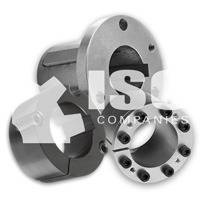 Shaft Locking Devices
Shaft Locking Devices
ISC Companies and affiliate Adams-ISC are distributors of mechanical power transmission parts including shaft locking devices. For more information about the brands we offer and/or pricing, please contact us by phone 763-559-0033, by email [email protected], or by filling out our online contact form.
Tapered Shaft Bushing Types
Tapered shaft bushings are among the most widely used means to mount or attach a part to a shaft. All bushing types use the principle of the wedge to clamp the bushing to the shaft. They are easy to install and remove and are interchangeable between manufacturers. Various types of bushings are offered for a variety of power transmission products such as sprockets, sheaves, gears, timing pulleys/synchronous sprockets, couplings, and conveyor pulleys.
The three types of bushings are QD, taper-lock, and split-taper. Within each type is a series with a bore range that will mate only with components that utilize that same type and series of bushing.
QD (Quick Disconnect) Bushings
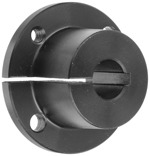 QD bushings use a 3/4 in. per foot taper and have two sets of holes, one threaded and one one unthreaded. When the mating part has the same arrangement, the bolts may be tightened from either side. Standard mounting is when the bolts are mounted through the unthreaded holes of the bushing into the threaded holes of the mating part. When the bolts are mounted through the unthreaded holes of the part into the threaded holes of the bushing, it is known as a reverse-mount. When dismounting the bushing is necessary, the bolts are taken out and screwed into the threaded holes to disassemble the parts.
QD bushings use a 3/4 in. per foot taper and have two sets of holes, one threaded and one one unthreaded. When the mating part has the same arrangement, the bolts may be tightened from either side. Standard mounting is when the bolts are mounted through the unthreaded holes of the bushing into the threaded holes of the mating part. When the bolts are mounted through the unthreaded holes of the part into the threaded holes of the bushing, it is known as a reverse-mount. When dismounting the bushing is necessary, the bolts are taken out and screwed into the threaded holes to disassemble the parts.
Taper-Lock Bushings
Taper-lock bushings allow for a flush fit to the mating part, which requires less space on the shaft than the flanged bushing styles. This bushing uses set screws to fasten the bushing to the mating part. The taper is 1-11/16 in. per foot, which gives less clamping force than other bushings. They can be mounted from one side only. Most taper-lock sprockets are available with mounting from the opposite side of standard. This feature must be called out when specifying the mounting arrangement. This bushing is not recommended for shock loading or reversing applications.
Split-Taper Bushings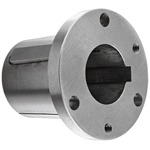
Split-taper bushings utilize a double split barrel, which increases concentricity and improves clamping. This bushing has a flange and can be mounted only one way. External key allows for higher torque capacity and aligns bolt holes between mating parts. Long barrel provides better support on the shaft. This bushing is only offered by a few sources.
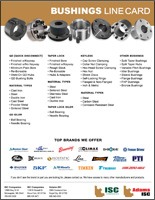 View Bushings Line Card | View All Line Cards
View Bushings Line Card | View All Line Cards
Keyless Locking Devices (KLDs)
Keyless shaft-to-hub locking devices, sometimes called keyless bushings, allow components to be easily removed, repositioned, or mounted more securely and conveniently on a shaft than with keyways, setscrews, or locknuts. Keyless locking devices also allow repositioning a component on a shaft to adjust alignment, synchronize position of that component with another, or for timing functions. The arrangement avoids the backlash that is sometimes encountered with keyed connections. Overall cost is often less for low-volume applications because keyways, threads, and close tolerances are not required. Most keyless locking devices allow generous tolerances on shafts and hubs.
Principle of Operation
The majority of keyless shaft-to-hub locking designs employ an inner sleeve with a tapered OD and an outer sleeve with a tapered ID. The inner sleeve fits around the shaft, and the outer sleeve fits inside the hub bore of the pulley, sheave, gear, sprocket, or similar component. Tightening loading bolts forces the inner sleeve into the outer, which causes the inner sleeve to squeeze onto the shaft and the outer sleeve to press outward on the bore ID.
Regardless of design, keyless shaft-locking devices allow a shaft of a given diameter to transmit more torque than if it had a keyway. The reason is that the holding stress is uniformly distributed around the OD of the shaft and ID of the bore, instead of being concentrated at keyways.
Because locking devices exert pressure between the shaft and hub, it is important to refer to the maufacturer’s specifications for the minimum hub thickness required. A hub that is too thin could crack under high pressure. If hollow shafting is used, minimum recommended shaft wall thickness should be checked.
Some types of keyless locking devices can be used with shafts and components that contain keyways or flats. Others require keyways and flats to be filled and rounded to match the shaft OD.
Tapered Versions
There are three common variations employing the principle of tapered sleeves.
- One version uses a pair of loading rings tapered on their ID and OD on facing sides. Holes drilled through one one ring allow loading bolts to engage the other ring, which has threaded holes. Tightening loading bolts moves the rings apart. Ring sections with tapers matching the loading rings are positioned between the taper surfaces of the loading rings around the OD of the shaft and ID of the hub bore. Tightening the loading bolts causes the tapered surfaces to force the outer ring sections against the hub bore and the inner ring sections against the shaft circumference.
- The second variation uses a single nut to force an elongated inner ring (collet) into an elongated outer ring (sleeve). One end of the collet is threaded; as a loading nut is tightened on these threads, it pushes axially on the sleeve and pulls the collet deeper into the sleeve. The tapered surfaces of the collet and sleeve act as a wedge to expand the sleeve against the hub bore and squeeze the collet onto the shaft.
- The third version employs narrow, tapered surfaces that form a helix, a configuration resembling matching tapered threads on an inner sleeve and outer sleeve. Forcing the outer sleeve over the inner sleeve causes a wedging action of the tapered surfaces at each thread. Loading is accomplished by a nut threaded onto one end of the inner sleeve. Loading screws positioned parallel to the shaft are threaded into the loading nut. As the loading screws are tightened, they push on the outer sleeve, creating stress at mating tapered surfaces.
Other Versions
Some keyless locking devices rely on radial expansion of a collar that fits into the space between the hub bore and shaft. One version has a sleeve that resembles a bellows or accordion. Loading bolts positioned parallel to the shaft fit into through-holes around the sleeve. As bolts are tightened at one end of the sleeve, they advance into threaded holes at the other end to compress the sleeve lengthwise in an accordion-like fashion. The action compresses and shortens the sleeve, expanding it radially, so the OD increases and the ID decreases. A result is an interference fit between the hub bore and shaft OD.
Shaft Collars
See our Shaft Collars page.
Top Brands We Offer
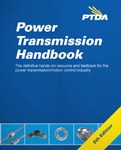 Content on this page was created using excerpts from the Power Transmission Handbook (5th Edition), which is written and sold by the Power Transmission Distributor’s Association (PTDA).
Content on this page was created using excerpts from the Power Transmission Handbook (5th Edition), which is written and sold by the Power Transmission Distributor’s Association (PTDA).
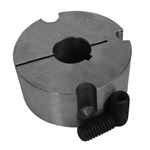
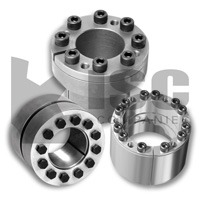


















You must be logged in to post a comment.